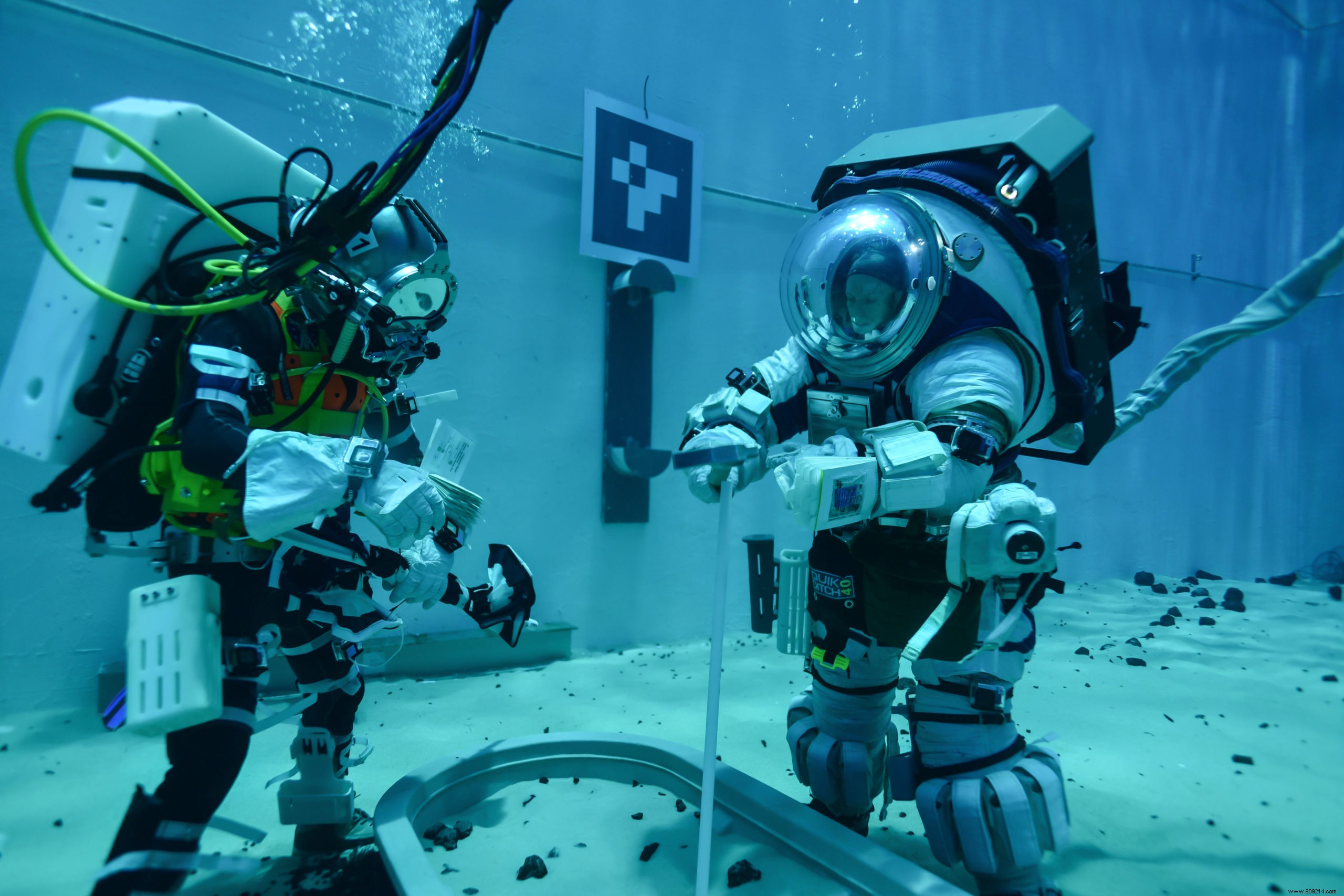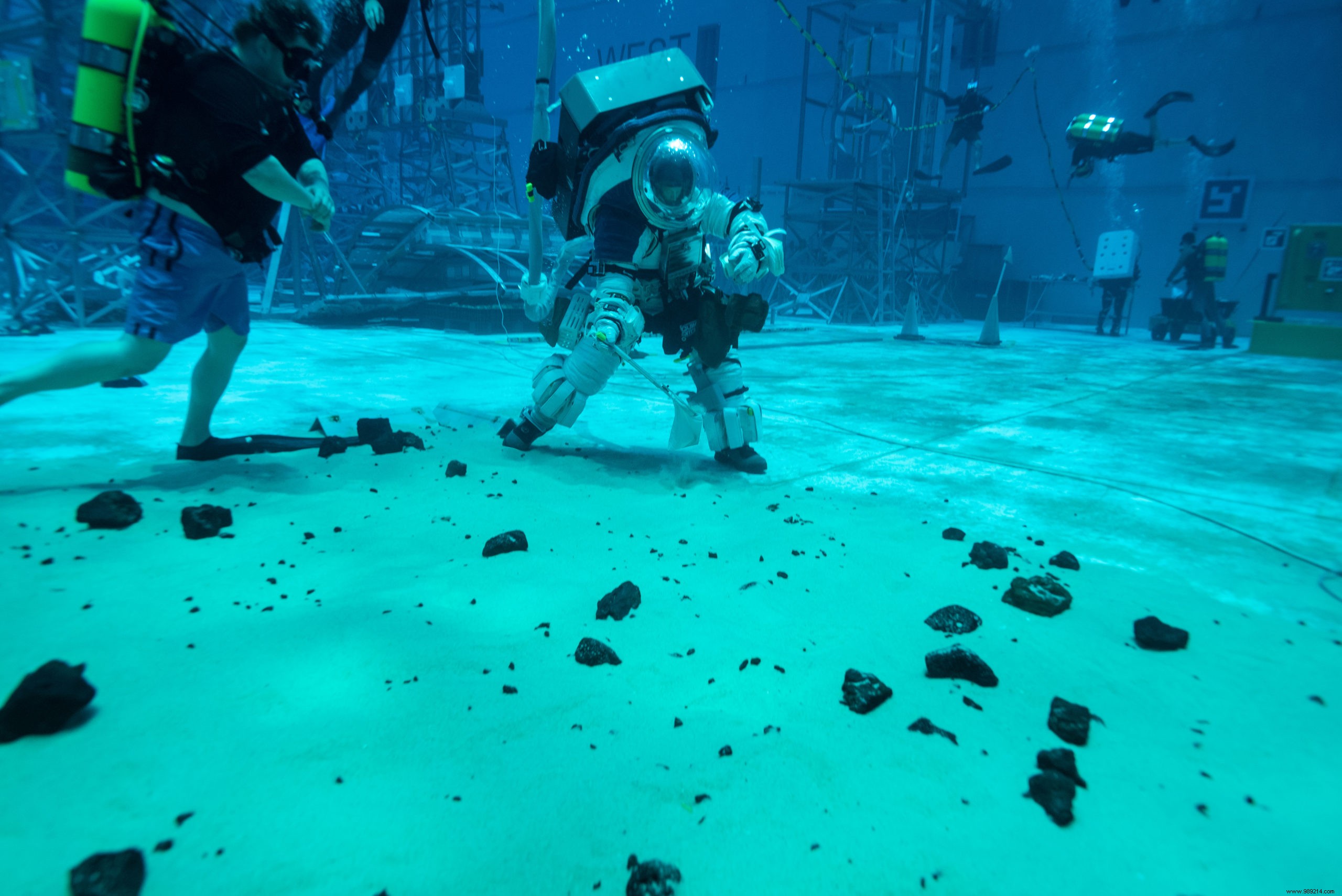As part of the Artemis missions, the astronauts who will walk on the Moon will wear new spacesuits. One of them was recently tested in the enormous pool at the Lyndon B. Johnson Space Center in Houston.
Considered to be true custom spaceships, the spacesuits used on the Apollo missions were very effective, but today they have some limitations. The United States has the ambition to return to the Moon in 2024. NASA therefore had to rethink its equipment. These new combinations, called Extravehicular Mobility Unit (or xEMU), were presented a few months ago.
We know that the main danger once on the lunar surface is dust, which is made up of tiny, highly abrasive glass-like fragments. The new suit has therefore been designed to prevent any inhalation by the astronaut or contamination of his life support system .
We also know that the Life Support Portable system, the "backpack" that supplies astronauts with oxygen and eliminates exhaled CO2, has been reduced. It will therefore be less bulky, but will also allow longer spacewalks. The helmets will also have earphones and microphones will be integrated into the astronaut's upper torso. This will facilitate communications with other crew members or with mission controllers .
Astronauts on the Artemis missions will also have new hip, knee and shoulder joints. This will allow them to move around more easily, with greater freedom of movement.
One of these suits was recently tested in the massive Neutral Buoyancy Laboratory pool at NASA's Johnson Space Center in Houston, Texas. Astronauts regularly dive into this tank to train for spacewalks. Underwater, engineers can indeed simulate different levels of gravity . As a reminder, that of the Moon is equivalent to one-sixth of that of the Earth (approximately).
As part of these tests, astronauts simulated several movements, including sampling moon rock and dust. They also practiced climbing a ladder and planting an American flag.


Note that in addition to these main space suits , each astronaut in the Artemis program will also need an internal undergarment, the first prototype of which has already been completed.
Finally, let's remember that a first crew should normally be placed in orbit around the Moon in 2022 as part of the Artemis II mission. Then will come the Artemis III mission which will finally lead the astronauts to land on the lunar ground in 2024. It will be the first human moon landing since Apollo 17 in 1972.